Tag Archives: Data Science
Instance-based vs Model-based Learning: Differences
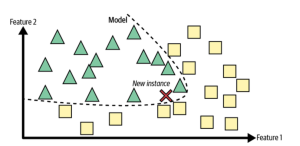
Machine learning is a field of artificial intelligence that deals with giving machines the ability to learn without being explicitly programmed. In this context, instance-based learning and model-based learning are two different approaches used to create machine learning models. While both approaches can be effective, they also have distinct differences that must be taken into account when building a machine learning system. Let’s explore the differences between these two types of machine learning. What is instance-based learning & how does it work? Instance-based learning (also known as memory-based learning or lazy learning) involves memorizing training data in order to make predictions about future data points. This approach doesn’t require any …
Different types of Clustering in Machine Learning
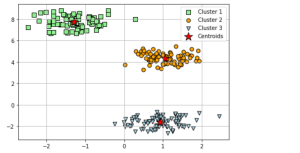
Clustering is a type of unsupervised machine learning technique that is used to group data points into distinct categories or clusters. It is one of the most widely used techniques in machine learning and can be used for various tasks such as grouping customers by their buying habits, creating groups of similar documents, or finding groups of related genes. In this blog post, we will explore different types / categories of clustering methods and discuss why they are so important in the field of machine learning. Prototype-based Clustering Prototype based clustering represents one of the categories of clustering algorithms that are used to identify groups within a larger dataset. This …
Python Pickle Example: What, Why, How

Have you ever heard of the term “Python Pickle“? If not, don’t feel bad—it can be a confusing concept. However, it is a powerful tool that all data scientists, Python programmers, and web application developers should understand. In this article, we’ll break down what exactly pickling is, why it’s so important, and how to use it in your projects. What is Python Pickle? In its simplest form, pickling is the process of converting any object into a byte stream (a sequence of bytes). This byte stream can then be transmitted over a network or stored in a file for later use. It’s like putting the object into an envelope and …
Free Datasets for Machine Learning & Deep Learning
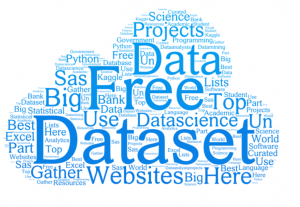
Are you looking for free / popular datasets to use for your machine learning or deep learning project? Look no further! In this blog post, we will provide an overview of some of the best free datasets available for machine learning and deep learning. These datasets can be used to train and evaluate your models, and many of them contain a wealth of valuable information that can be used to address a wide range of real-world problems. So, let’s dive in and take a look at some of the top free datasets for machine learning and deep learning! Here is the list of free data sets for machine learning & …
Difference between Online & Batch Learning
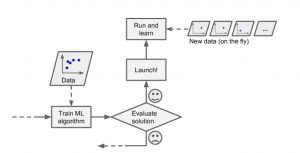
In this post, you will learn about the concepts and differences between online and batch or offline learning in relation to how machine learning models in production learn incrementally from the stream of incoming data or otherwise. It is one of the most important aspects of designing machine learning systems. Data science architects would require to get a good understanding of when to go for online learning and when to go for batch or offline learning. Why online learning vs batch or offline learning? Before we get into learning the concepts of batch and on-line or online learning, let’s understand why we need different types of models training or learning …
Moving Average Method for Time-series forecasting
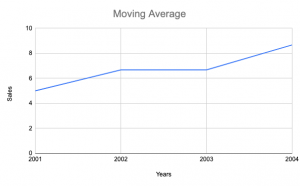
In this post, you will learn about the concepts of the moving average method in relation to time-series forecasting. You will get to learn Python examples in relation to training a moving average machine learning model. The following are some of the topics which will get covered in this post: What is the moving average method? Why use the moving average method? Python code example for the moving average methods What is Moving Average method? The moving average is a statistical method used for forecasting long-term trends. The technique represents taking an average of a set of numbers in a given range while moving the range. For example, let’s say …
Drivetrain Approach for Machine Learning

In this post, you will learn about a very popular approach or methodology called as Drivetrain approach coined by Jeremy Howard. The approach provides you steps to design data products that provide you with actionable outcomes while using one or more machine learning models. The approach is indeed very useful for data scientists/machine learning enthusiasts at all levels. However, this would prove to be a great guide for data science architects whose key responsibility includes designing the data products. Without further ado, let’s do a deep dive. Why Drivetrain Approach? Before getting into the drivetrain approach and understands the basic concepts, Lets understand why drivetrain approach in the first place? …
Machine Learning Models Evaluation Techniques
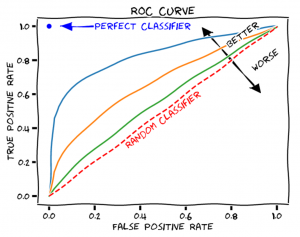
Machine learning is a powerful machine intelligence technique that can be used to develop predictive models for different types of data. It has become the backbone of many intelligent applications and evaluating machine learning model performance at a regular intervals is key to success of such applications. A machine learning model’s performance depends on several factors including the type of algorithm used, how well it was trained and more. In this blog post, we will discuss essential techniques for evaluating machine-learning model performance in order to provide you with some best practices when working with machine-learning models. The following are different techniques that can be used for evaluating machine learning …
Data Preprocessing Steps in Machine Learning

Data preprocessing is an essential step in any machine learning project. By cleaning and preparing your data, you can ensure that your machine learning model is as accurate as possible. In this blog post, we’ll cover some of the important and most common data preprocessing steps that every data scientist should know. Replace/remove missing data Before building a machine learning model, it is important to preprocess the data and remove or replace any missing values. Missing data can cause problems with the model, such as biased results or inaccurate predictions. There are a few different ways to handle missing data, but the best approach depends on the situation. In some …
Bagging vs Boosting Machine Learning Methods
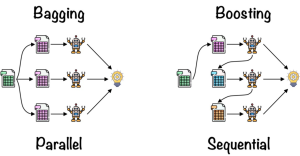
In machine learning, there are a variety of methods that can be used to improve the performance of your models. Two of the most popular methods are bagging and boosting. In this blog post, we’ll take a look at what these methods are and how they work with the help of examples. What is Bagging? Bagging, short for “bootstrap aggregating”, is a method that can be used to improve the accuracy of your machine learning models. The idea behind bagging is to train multiple models on different subsets of the data and then combine the predictions of those models. The data is split into a number of smaller datasets, or …
Weak Supervised Learning: Concepts & Examples
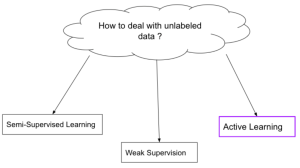
Supervised learning is a type of machine learning algorithm that uses a labeled dataset to learn and generalize from. The labels act as supervisors, providing the algorithm with feedback so it can learn to map input data to the correct output labels. In this blog post, we’ll be focusing on weak supervised learning, a subset of supervised learning that uses only partially labeled or unlabeled data. We’ll cover some of the most common weak supervision techniques and provide examples of each. What is Weak Supervised Learning? Weak supervised learning is a type of machine learning where the learner is only given a few labels to work with. Weak supervision is …
Healthcare Claims Processing AI Use Cases

In recent years, artificial intelligence (AI) / machine learning (ML) has begun to revolutionize many industries – and healthcare is no exception. Hospitals and insurance companies are now using AI to automate various tasks in the healthcare claims processing workflow. Claims processing is a complex and time-consuming task that often requires manual intervention. By using AI to automate claims processing, healthcare organizations can reduce costs, improve accuracy, and speed up the claims adjudication process. In this blog post, we will explore some of the most common use cases for healthcare claims processing AI / machine learning. Automated Data Entry One of the most time-consuming tasks in the claims process is …
ESG & AI / Machine Learning Use Cases

Environmental, social, and governance (ESG) factors are a set of standards used to evaluate a company’s performance on issues that have an impact on society and the environment. AI or machine learning can be used to help identify these factors. In this blog post, we will explore some use cases for how AI / machine learning can be used in conjunction with ESG factors. The following is a list of AI use cases related ESG. This list will be updated from time-to-time. Predict ESG ratings using fundamental dataset: Investors (asset managers and asset owners) started to assess companies based on how they handle sustainability issues. To do this assessment, investors …
List of Machine Learning Topics for Learning

Are you looking for a list of machine learning topics to learn more about? If so, you’ve come to the right place. In this post, we will share a variety of machine learning topics that you can explore to boost your knowledge and skills. So, whether you’re a data scientist or machine learning engineer, there’s something here for everyone. The following represents a list of topics which can be taken up for learning and mastering artificial intelligence / machine learning: Introduction to data science Introduction to machine learning Check out this detailed post on machine learning concepts & examples. Introduction to deep learning Introduction to reinforcement learning Introduction to linear …
What are Features in Machine Learning?
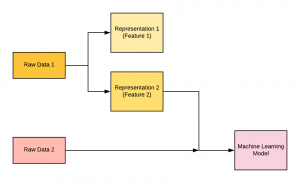
Machine learning is a field of machine intelligence concerned with the design and development of algorithms and models that allow computers to learn without being explicitly programmed. Machine learning has many applications including those related to regression, classification, clustering, natural language processing, audio and video related, computer vision, etc. Machine learning requires training one or more models using different algorithms. Check out this detailed post in relation to learning machine learning concepts – What is Machine Learning? Concepts & Examples. One of the most important aspects of the machine learning model is identifying the features which will help create a great model, the model that performs well on unseen data. …
K-Nearest Neighbors (KNN) Python Examples
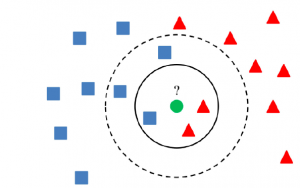
If you’re working with data analytics projects including building machine learning (ML) models, you’ve probably heard of the K-nearest neighbors (KNN) algorithm. But what is it, exactly? And more importantly, how can you use it in your own AI / ML projects? In this post, we’ll take a closer look at the KNN algorithm and walk through a simple Python example. You will learn about the K-nearest neighbors algorithm with Python Sklearn examples. K-nearest neighbors algorithm is used for solving both classification and regression machine learning problems. Stay tuned! Introduction to K-Nearest Neighbors (K-NN) Algorithm K-nearest neighbors is a supervised machine learning algorithm for classification and regression. In both cases, the input consists …
I found it very helpful. However the differences are not too understandable for me